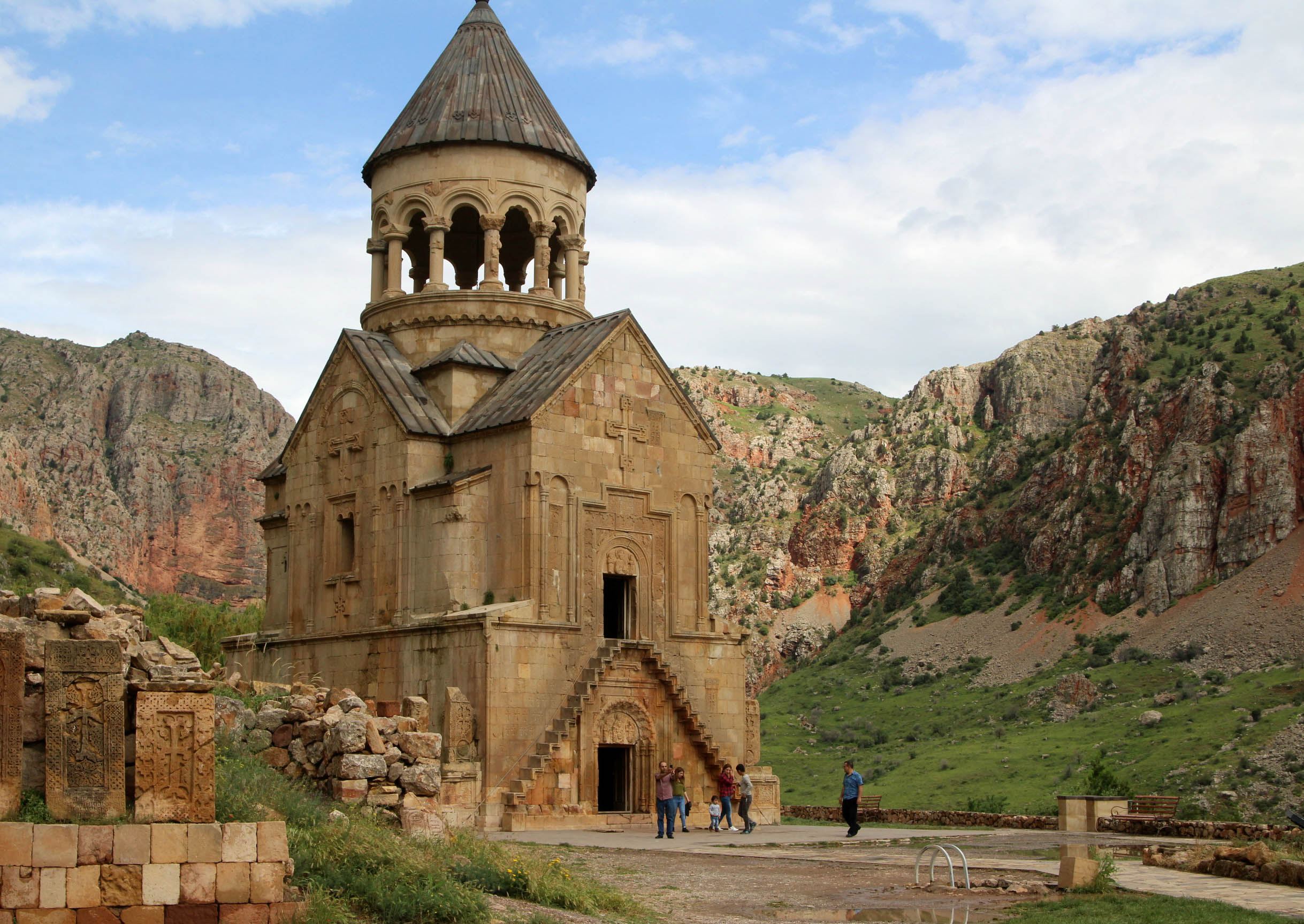
Edward Rigor, a 29-year-old Filipino, was travelling in a minibus with several other tourists in Armenia. They had spent the morning visiting ancient monasteries.
It was spring, the weather was cool and everyone was keen to reach the mountains.
As they drew closer, Rigor rolled down the window and stuck his head out in the biting wind.
Others got their smartphones ready and craned their necks, hoping to catch their very first glimpse of snow.
Finally, in the distance, they saw it: the slopes just above Tsaghkadzor town were glimmering white.
“When we got there, we were screaming inside. Everyone was taking pictures, videos, and recording for Facebook Live and Instagram” says Edward. “It was like being children again, taking our shirts off and playing in the snow.
“We all thought that we just have to be happy and treasure these moments, because who knows when we will see snow again?”
Edward is one of thousands who visit Armenia every year.
Since 2014, the number of Filipino tourists has shot up from 674 to over 22,000 in 2017, the Tourism Committee of Armenia told Al Jazeera.
And over the last few years, a growing number of Filipinos has settled in Yerevan, Armenia’s capital – at least 300, according to the Philippines Embassy in Moscow.
The Facebook group “Filipino Community in Yerevan City” boasts 1,300 members.
In December, we have more than 300 guests because Filipinos want to experience snow and a white Christmas. Throughout the year, the most popular tours are the ones to Mount Aragats, where there is always snow. It’s the biggest attraction.
Renato Marilag, Little Manila hostel owner
Like Rigor, who lives Dubai and does admin work for a local supermarket, most Filipinos who visit are Oversees Filipino Workers (OFWs) in the UAE, Qatar, Bahrain, Kuwait and Saudi Arabia.
Because of visa rules in several Gulf countries, expatriate workers are forced to leave often to renew their visas.
The “visa run” used to be merely a wearing formality – hopping on a bus or short flight across a border and coming back the same day. But many now are transforming this bureaucratic hindrance into an opportunity.
“Before we used to go to Kish Island in Iran, or Muscat [Oman],” says Edward, “but then we heard that in Armenia you can go on a tour while changing your visa. For Filipinos who have never experienced snow, it’s amazing.”
 |
| Edward Rigor and a friend enjoy a glass of wine in Yerevan, Armenia. He is one of more than 22,000 Filipinos to visit Armenia each year [Megan Iacobini de Fazio/Al Jazeera] |
With flights starting from around $300 return, Armenia is one of the cheapest Christian countries for Filipinos to get to from the Gulf, and for the religious Filipino community, much of its allure lies in the possibility of visiting its ancient monasteries and churches.
“To the extent that Christianity is important, having the opportunity for worship is vitally important,” says professor James Tyner, who teaches geography at Kent State University in Ohio and has researched mobility and migration in the Filipino context.
“Religion may form an important part of one’s identity, and provides also a comforting structure to one’s life. It provides stability in an unstable, precarious existence,” he told Al Jazeera.
The bureaucratic aspect of working abroad means that the lives of many migrants often revolve around their legal status. They sometimes have to leave at a moment’s notice, and spend months or years away from families. For this reasons, explains professor Tyner, community assumes tremendous importance.
Little Manila
Along one of the wide, tree-lined streets of Yerevan is Little Manila, a hostel and tour company that caters especially to Filipino visitors. A plastic menu hangs on the wall in the common room, colourful photos depicting the delicacies on offer: pork sinigang, lechon kawali, tapsilog and chicken tinola.
“There are Little Manilas in Dubai and Hong Kong, so why not Yerevan too?” says Renato Marilag, one of the hostel’s owners. He and his wife, Marie, recently welcomed their baby Mia.
“She’s the first Armenian-Filipino baby,” he claims. “I want her to grow up here and speak Armenian. I know she’ll like it here.”
The graphic designer was living in the UAE when he first heard of the country.
“I didn’t know of anyone who had been,” he says, “but one guy visited some years ago and the word spread. Now all Filipinos in the Gulf know about it.”
Beckoned by an entrepreneurial brother-in-law, Marilag travelled to Armenia for the first time in 2015 to scope out business opportunities.
He enjoyed the cool climate and found locals to be friendly and helpful, despite not always being able to speak English.
“Compared to Dubai, the quality of life here is very good. Salaries are much lower, but it’s worth it. The climate is good, and people are nice,” he says.
Only a few months after his first visit, he and his partners opened the doors to Little Manila. Now, they welcome an average of 120 tourists every month and run tours to Garni Temple, Lake Sevan and Khor Virap Monastery.
“Being a Christian is very important for us, that’s why Filipinos don’t want to miss the historical churches when they come here. That is almost the first thing on people’s minds,” says Marilag.
But not the very first thing. Little Manila’s bookings skyrocket in winter when the ground is covered in a thick layer of snow.
“In December, we have more than 300 guests because Filipinos want to experience snow and a white Christmas,” says Marilag. “Throughout the year, the most popular tours are the ones to Mount Aragats, where there is always snow. It’s the biggest attraction, for sure.”
Rigor, for one, is planning a return trip in December. “Honestly, I just want to keep coming back to Armenia. Again and again.”
 |
| Litttle Manila organises tours to churches and monasteries like this one, Khor Virap [Courtesy: Edward Rigor] |












